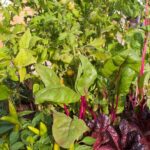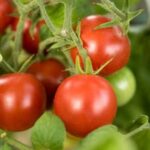Are you interested in starting a garden but lack the space for a traditional in-ground plot? If so, raised bed container vegetable gardening might be the perfect solution for you. This method of gardening involves growing vegetables in above-ground containers, providing several benefits including improved soil quality and better pest control. In this article, we will explore how to get started with raised bed container vegetable gardening, from selecting the right location to harvesting your homegrown produce.
Raised bed container vegetable gardening offers numerous advantages for both experienced and novice gardeners. From utilizing limited space more efficiently to providing better drainage and soil structure, there are many reasons to consider this method for growing your own food. By following the tips and guidelines provided in this article, you can create a successful and bountiful raised bed container garden.
Before you get started with your raised bed container vegetable garden, it’s important to understand how to choose the right location for your plants. Factors such as sunlight exposure, water availability, and convenience should all be taken into consideration.
Additionally, selecting the best vegetables suited for raised bed container gardening is essential for achieving a thriving and productive garden. In this article, we will guide you through the process of picking an ideal location and choosing suitable vegetables for your raised bed container garden.
Benefits of Raised Bed Container Vegetable Gardening
Raised bed container vegetable gardening offers numerous benefits for both beginner and experienced gardeners. One of the main advantages of using raised bed containers is that they allow for better control over soil quality and drainage.
The elevated nature of these containers also helps to prevent soil compaction, which can hinder the growth of vegetables. Additionally, the use of raised beds can make it easier to tend to your garden as you won’t have to bend over as much, making it a more accessible option for people with physical limitations.
Another benefit of raised bed container vegetable gardening is the ability to extend the growing season. Since the soil in raised beds warms up faster in the spring, you can start planting earlier than you would in a traditional garden.
This can result in an earlier harvest and a longer growing season for your vegetables. Additionally, if you choose to add covers or cold frames to your raised beds, you can further protect your plants from frost and extend their growing period even further.
Furthermore, raised bed containers provide better weed control compared to traditional in-ground gardening. The contained environment makes it easier to spot and remove weeds, helping to ensure that they do not compete with your vegetables for nutrients and sunlight.
This ultimately reduces the amount of time and effort needed for maintenance. Moreover, because raised beds are usually filled with new soil or compost that is free from weed seeds, there is less chance of weed infestations compared to ground-level gardens.
- Improved soil drainage
- Accessibility for all gardeners
- Extended growing season
- Better weed control
- Reduced maintenance effort
Choosing the Right Location for Your Raised Bed Container Garden
When it comes to raised bed container vegetable gardening, choosing the right location for your garden is crucial for the success of your crops. Here are some key factors to consider when selecting the location for your raised bed containers:
1. Sunlight: Make sure that your chosen location receives adequate sunlight, at least 6-8 hours per day, as most vegetables require plenty of sun to thrive.
2. Accessibility: Choose a spot that is easily accessible for watering, harvesting, and maintenance. You’ll want to minimize the effort required to care for your vegetable garden.
3. Drainage: Ensure that the location has good drainage to prevent waterlogging, which can be detrimental to the health of your plants.
4. Space: Consider the amount of space available in your chosen location and plan accordingly. Make sure there is enough room for the size and number of raised bed containers you intend to use.
5. Protection from Pests: If possible, select a location that is protected from pests such as rabbits or deer by using fences or other deterrents.
By carefully considering these factors, you can choose an ideal location for your raised bed container vegetable garden that will promote healthy plant growth and bountiful harvests.
Once you have selected the perfect spot for your raised bed container garden, you can start planning and preparing for an abundant harvest of fresh, homegrown vegetables. Remember to take into account these important considerations to ensure a successful and productive gardening experience.
Selecting the Best Vegetables for Raised Bed Container Gardening
When it comes to raised bed container vegetable gardening, choosing the right vegetables is crucial for a successful and bountiful harvest. Not all vegetables are well-suited for container gardening, so it’s important to select varieties that thrive in this environment.
Some of the best vegetables for raised bed container gardening include tomatoes, peppers, lettuce, spinach, carrots, radishes, and herbs like basil and parsley. These vegetables are not only well-suited for containers but also provide a variety of flavors and nutrients for your meals.
One of the main considerations when selecting vegetables for raised bed container gardening is the size of the mature plant. It’s important to choose compact or dwarf varieties that don’t require a lot of space. Additionally, consider the growth habits of the plants – some vegetables like vining tomatoes or cucumbers may need trellises or support structures in a raised bed container garden.
Another important factor to consider is the climate and growing conditions in your area. Choose vegetables that are well-adapted to your specific climate and sunlight conditions to ensure a successful harvest. By selecting the best vegetables for raised bed container gardening, you can create a thriving and productive garden in a limited space.
Soil Preparation and Maintenance for Raised Bed Container Gardening
One of the key factors to successful raised bed container vegetable gardening is the soil preparation. The type and quality of soil used in your raised bed containers will directly impact the growth and health of your vegetables. When preparing the soil, it is important to use a mix that is light, well-draining, and rich in organic matter.
Choosing the Right Soil Mix
When selecting a soil mix for your raised bed container garden, it is recommended to use a combination of topsoil, compost, and other organic material such as peat moss or coconut coir. This mixture provides a balance of nutrients, water retention, and proper drainage for your vegetable plants.
Maintaining Soil Health
In order to maintain the health of the soil in your raised bed containers, regular maintenance is necessary. This includes adding organic matter such as compost or aged manure to replenish nutrients, as well as periodically testing the pH levels of the soil to ensure it remains within the optimal range for vegetable growth.
Preventing Soil Compaction
To prevent soil compaction in your raised bed containers, avoid walking on them or placing heavy objects on top. Compacted soil can inhibit root growth and water penetration, so it is important to regularly aerate the soil by gently turning it over with a hand tool.
With proper soil preparation and maintenance, your raised bed container vegetable garden will provide an ideal environment for healthy and productive vegetable plants. Remember to regularly monitor the condition of the soil and make adjustments as needed to ensure optimal growing conditions for your crops.
Building and Maintaining Raised Bed Containers for Vegetable Gardening
Building and maintaining raised bed containers is an essential part of successful vegetable gardening. Whether you purchase pre-made raised bed containers or decide to build your own, there are key factors to consider in order to ensure the longevity and productivity of your garden.
Materials and Construction
When building raised bed containers for vegetable gardening, it is important to choose materials that are durable and able to withstand the elements. Cedar and redwood are popular choices due to their natural resistance to rot and decay. Additionally, using non-toxic materials is crucial since vegetables will be growing in close proximity to the containers.
When constructing raised bed containers, it is important to consider the depth of the container based on the root systems of the vegetables you plan to grow. Most vegetables require a minimum of 6-12 inches of soil depth, so make sure your containers accommodate this need.
Maintenance and Upkeep
Maintaining raised bed containers involves regular inspections for wear and tear, as well as ensuring that they remain level and stable over time. The soil within the containers should be replenished annually with nutrient-rich compost in order to support healthy plant growth.
It is also important to regularly check for any signs of deterioration or damage, such as rotting wood or loose screws. Additionally, keep an eye out for any pests or diseases that may affect the container itself, which could potentially spread to your plants if left untreated. By regularly maintaining your raised bed containers, you can ensure a thriving environment for your vegetable garden year after year.
Watering and Fertilizing Tips for Raised Bed Container Gardens
One of the most important aspects of raised bed container vegetable gardening is ensuring that your plants are properly watered and fertilized. Since raised bed containers can dry out more quickly than traditional garden beds, it is crucial to stay on top of watering needs.
One tip for effective watering in raised bed containers is to install a drip irrigation system, which ensures that water is delivered directly to the roots of the plants. This can help prevent water evaporation and ensure that your vegetables receive consistent moisture.
In addition to proper watering, fertilizing is essential for the success of your raised bed container garden. Since the soil in containers can become depleted more quickly than in-ground gardens, regular fertilization is necessary. Consider using a balanced fertilizer specifically designed for vegetable gardens. This will provide your plants with the necessary nutrients for healthy growth and abundant harvests.
Another important tip for watering and fertilizing raised bed container gardens is to regularly monitor the moisture levels and nutrient content of the soil. Invest in a moisture meter or simply use your hands to feel the soil – if it feels dry at a depth of 1-2 inches, it’s time to water.
Additionally, conduct soil tests throughout the growing season to determine if additional fertilization is needed. By staying on top of watering and fertilizing needs, you can ensure that your raised bed container vegetable garden thrives and produces an abundance of fresh, delicious produce all season long.
Pest and Disease Management for Raised Bed Container Vegetable Gardening
When it comes to raised bed container vegetable gardening, one of the key factors to consider is pest and disease management. Because plants are grown in a confined space, they are more susceptible to pests and diseases than traditional garden beds. However, with proper care and attention, you can minimize these risks and ensure a healthy and thriving garden.
One of the most effective ways to manage pests and diseases in raised bed container gardens is through proactive measures. This includes regularly inspecting your plants for any signs of infestation or illness, such as holes in leaves, yellowing foliage, or wilting. By catching these issues early on, you can take action before they escalate and spread throughout your garden.
Another important aspect of pest and disease management in raised bed container gardening is maintaining good soil health. Healthy soil not only provides essential nutrients for plant growth but also helps create a natural defense against pests and diseases. Regularly amending your soil with organic matter, such as compost or well-aged manure, can help boost its fertility and improve the overall vitality of your plants.
A crucial part of pest and disease management for raised bed container vegetable gardening also involves practicing proper crop rotation. By rotating your crops each season, you can help deter specific pests and prevent the buildup of soil-borne diseases that may affect certain plant families. This simple yet effective strategy can contribute to the long-term health and productivity of your raised bed container garden.
| Aspect | Recommendation |
|---|---|
| Proactive Measures | Regularly inspect plants for signs of infestation or illness |
| Soil Health | Amend soil with organic matter like compost or manure |
| Crop Rotation | Practice crop rotation to deter specific pests and prevent soil-borne diseases |
Harvesting and Enjoying the Fruits of Your Raised Bed Container Garden
In conclusion, raised bed container vegetable gardening offers a convenient and productive way to grow your own fresh produce. By following the tips and guidelines provided in this article, you can create a successful raised bed container garden that will provide you with a bountiful harvest.
From choosing the right location to selecting the best vegetables, soil preparation, and maintenance, building and maintaining raised bed containers, as well as effective watering and fertilizing techniques, this method of gardening can be both fruitful and enjoyable.
One of the key benefits of raised bed container vegetable gardening is the ability to control the soil quality, making it easier to maintain optimal growing conditions for your plants. Additionally, the elevated nature of raised beds can make it easier for people with physical limitations to tend to their gardens. This method also helps protect your plants from pests and diseases, leading to healthier and more successful harvests.
As you begin harvesting your vegetables from your raised bed container garden, take time to savor the fruits of your labor. There is something incredibly satisfying about enjoying meals made with produce that you have grown yourself. Whether it’s crisp lettuce in a salad or juicy tomatoes in a sandwich, the taste of homegrown vegetables is unmatched.
With proper care and maintenance, your raised bed container garden will continue to provide delicious produce for many seasons to come. Happy gardening.
Frequently Asked Questions
What Vegetables Should Not Be Grown in a Raised Bed?
Some vegetables that should not be grown in a raised bed include large root vegetables like carrots, parsnips, and potatoes. These crops need a lot of space for their roots to grow deeply and may not thrive in the confines of a raised bed.
Are Container Gardens Better Than Raised Beds?
Whether container gardens are better than raised beds depends on various factors such as space, mobility, and personal preference. Container gardens are more mobile and may be better suited for small spaces, while raised beds provide better soil drainage and can accommodate a wider range of plants.
What Vegetables Can Be Grown Together in a Raised Bed?
Many different vegetables can be grown together in a raised bed, as long as their growth habits and nutrient needs are compatible. For example, carrots, radishes, and lettuce can be grown together because they have shallow roots and similar sunlight requirements, making them suitable companions in a raised bed garden.

If you’re looking to get into vegetable gardening, or are just looking for some tips on how to make your current garden better, then you’ve come to the right place! My name is Ethel and I have been gardening for years. In this blog, I’m going to share with you some of my best tips on how to create a successful vegetable garden.





